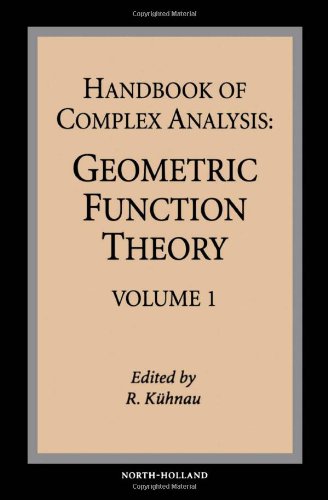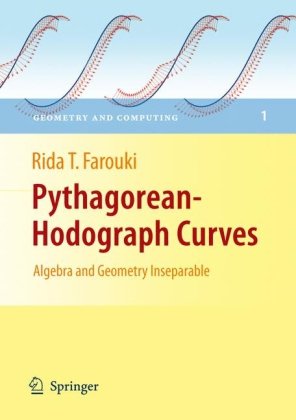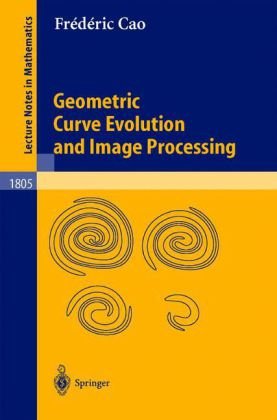Reiner Kuhnau9780080532813, 9780444828453, 0444828451
Table of contents :
Cover……Page 1
Date-line……Page 6
Preface……Page 7
List of Contributors……Page 11
Contents……Page 13
1. Univalent and multivalent functions (W.K. Hayman)……Page 15
1.1. Introduction……Page 17
1.2. The basic inequalities……Page 18
1.4. Means and coefficients……Page 20
1.6. The class $Sigma$ and bounded univalent functions……Page 23
1.7. Coefficient differences……Page 24
2.2. The maximum modulus……Page 25
2.3. Means and coefficients……Page 26
2.4. Ideas behind Theorem 2.2……Page 28
2.5. Bounds forthe $|a_n(lambda)|$……Page 30
3. Lowner’s theory and de Branges’ theorem……Page 31
3.1. Applications of Loewner’s theory……Page 32
3.2. De Branges’ theorem……Page 35
4.1. Convex and starlike functions……Page 37
4.2. Typically real and close-to-convex functions……Page 38
5. Brennan’s conjecture and related problems……Page 39
6.1. Introduction……Page 40
6.2. Sharp bounds……Page 41
6.3. Coefficient bounds and the Goodman conjecture……Page 43
6.4. Orders of magnitude……Page 44
6.6. Valencies on sequences……Page 46
References……Page 48
2. Conformal maps at the boundary (Ch. Pommerenke)……Page 51
1.2. Three introductory examples……Page 53
2.1. Jordan curves and locally connected sets……Page 55
2.2. Prime ends and cluster sets……Page 57
2.3. Limits and injectivity……Page 61
3.1. Free boundary arcs……Page 63
3.2. Smooth boundary arcs……Page 64
3.3. Corners……Page 66
3.4. Integral representations……Page 68
4. General boundaries……Page 69
4.1. Distortion near the boundary……Page 70
4.2. The angular derivative……Page 72
4.3. The behaviour almost everywhere……Page 73
4.4. The average growth of the derivative and the power series……Page 75
5.1. Subdomains of the unit disk……Page 78
5.2. John domains and quasidisks……Page 79
5.3. Boundaries of finite length……Page 82
References……Page 84
3. Extremal quasiconformal mappings of the disk (E. Reich)……Page 89
1.1. Definition and basic properties of quasiconformality……Page 91
1.2. Extension of boundary values – quasisymmetry, extremality……Page 93
1.3. The extremal problem for $n$-gons. Teichmueller mappings……Page 95
1.4. The extremal problem for given boundary values for the disk. Early results……Page 97
1.5. Relationship to harmonic mappings……Page 101
2.1. Statement of the condition. Consequences. Examples……Page 103
2.2. Proof of the Hamilton-Krushkal theorem for the disk……Page 107
2.3. Admissible variations……Page 110
3.1. The basic inequality -elementary version……Page 111
3.2. The basic inequality -general version……Page 112
3.3. Versions of the main inequality……Page 114
3.4. Bounds on $K_0[f]$. Characterization of extremal mappings……Page 115
3.5. Test for extremality – examples……Page 117
4.1. Substantial boundary points. Boundary dilatation……Page 118
4.2. The frame mapping condition……Page 122
5.2. Some necessary conditions……Page 125
5.3. Some sufficient conditions……Page 127
5.4. Necessary and sufficient conditions for unique extremality……Page 136
5.5. Point-shift mappings. Variability sets……Page 138
6.1. LNA extensions……Page 140
6.2. An example……Page 142
Acknowledgements……Page 143
References……Page 144
4. Conformal welding (D.H. Hamilton)……Page 151
1. Introduction……Page 153
2. Existence……Page 154
3. Uniqueness……Page 157
4. Fuchsian groups……Page 158
References……Page 159
5. Area distortion of quasiconformal mappings (D.H. Hamilton)……Page 161
1. Introduction……Page 163
2. From Groetzsch to Bojarski……Page 164
3. Holomorphy……Page 166
4. The class $Sigma(k)$……Page 167
5. A strange Harnack inequality……Page 168
6. Theorem 1, part I……Page 169
7. Theorem 1, part 2……Page 170
8. Bounds on the Beurling-Ahlfors transform……Page 172
References……Page 173
6. Siegel disks and geometric function theory in the work of Yoccoz (D.H. Hamilton)……Page 175
1. Introduction……Page 177
2. The theorem of Yoccoz……Page 178
References……Page 181
7. Sufficient conditions for univalence and quasiconformal extendibility of analytic functions (L.A. Aksent’ev and P.L. Shabalin)……Page 183
1. Introduction and classification of univalence conditions……Page 185
2. A review of sufficient conditions for quasiconformal extendibility in canonical domains……Page 188
3. Conditions for quasiconformal extension in non-canonical domains……Page 204
4. Univalence conditions in multiply connected domains……Page 208
5. Certain relations with universal Teichmueller spaces……Page 211
6.1. Integral representations. Aerohydrodynamical inverse boundary value problem……Page 213
6.2. Exterior inverse boundary value problem and conformal radius……Page 214
6.4. Flows in domains with variable boundaries……Page 215
6.5. Problems of boundary conjugation……Page 216
References……Page 217
8. Bounded univalent functions (D.V. Prokhorov)……Page 221
1. Introduction……Page 223
3. Parametric representations of bounded univalent functions……Page 224
4. Control theory methods in extremal problems for $S(M)$……Page 227
5. Coefficient estimates……Page 233
6. Subclasses of bounded univalent functions……Page 234
References……Page 240
9. The $ast$-function in complex analysis (A. Baernstein II)……Page 243
1. Introduction……Page 245
2. General properties of the $ast$-function……Page 247
3. Subharmonicity properties of the $ast$-function……Page 248
4. Nevanlinna’s $N$ function……Page 253
5. Integral means of univalent functions……Page 255
6. Circular symmetrization. Green functions, and harmonic measures……Page 258
7. Vertical $ast$-functions and Steiner symmetrization……Page 261
8. Conjugate harmonic functions……Page 264
9. Variants of the $ast$-function……Page 268
10. The spread relation……Page 271
11. Paley’s conjecture……Page 276
12. Symmetrization and the hyperbolic metric……Page 278
References……Page 282
10. Logarithmic geometry, exponentiation and coefficient bounds in the theory of univalent functions and nonoverlapping domains (A.Z. Grinshpan)……Page 287
1. Introduction……Page 289
2. Full mappings and slit mappings……Page 290
3. The area method……Page 291
4. The Bieberbach theorem and conjecture……Page 293
5. The Lbwner method: parametric representation of slit mappings……Page 294
6. The Grunsky univalence criterion and Milin area theorem……Page 296
7. The Lebedev area theorem for nonoverlapping domains……Page 301
8. Quasiconformal and regularly measurable maps……Page 308
9. The Grunsky operator and quasiconformally extendible functions……Page 310
10. Pairs of functions with nonoverlapping image domains and the $tau$-norm……Page 313
11. Exponentiation, Milin’s method, and descent technique……Page 316
12. The Milin theorem and conjecture on logarithmic functional……Page 324
13. De Branges’ theorem and the proof of the Bieberbach conjecture……Page 325
14. Successive coefficients of univalent functions and coefficients of odd functions……Page 328
15. Estimates for functions whose range has a finite logarithmic area……Page 330
16. Coefficient properties of Gel’fer functions……Page 332
17. Coefficient estimates depending on Grunsky norm……Page 333
18. The Goodman conjecture and polynomial compositions……Page 335
19. A remark on noncoefficient problems……Page 336
References……Page 337
11. Circle packing and discrete analytic function theory (K. Stephenson)……Page 347
Introduction……Page 349
1.1. Circle packing basics……Page 351
1.2. Maximal packings……Page 354
1.3. Packing variety……Page 360
1.4. Discrete analytic functions……Page 362
1.5. Examples of discrete functions……Page 363
1.6. Examples of discrete theory……Page 368
1.7. Comment on approximation……Page 369
2.1. The “type” problem……Page 371
2.2. Harmonic measure……Page 372
2.3. Potential theory……Page 373
2.4. Extremal length……Page 374
2.5. “Packable” surfaces and dessins……Page 375
2.7. Classical analysis issues……Page 377
Appendix A: Computational notes……Page 379
Appendix B: The literature……Page 380
References……Page 381
12. Extreme points and support points (T.H. MacGregor and D.R. Wilken)……Page 385
1. Introduction……Page 387
2. Integral representations……Page 388
3. Subclasses of $S$……Page 389
4. Subordination classes……Page 392
5. Applications……Page 396
6. Univalent functions……Page 400
7. Notes……Page 403
References……Page 404
13. The method of the extremal metric (J.A. Jenkins)……Page 407
1. History, definitions and standard results……Page 409
2. Quadratic differentials……Page 414
3. Modules of multiple curve families……Page 419
4. The General Coefficient Theorem……Page 424
5. Symmetrization……Page 428
6. Boundary correspondence. Boundary distortion……Page 431
7. Univalent regular and meromorphic functions and other function families……Page 433
8. Strip domains. Angular derivatives……Page 440
9. Harmonic measures and triad modules……Page 445
10. Application to non-univalent functions……Page 448
11. Multivalent functions……Page 453
12. Quasiconformal mappings……Page 456
13. Various results……Page 460
References……Page 463
14. Universal Teichmueller space (F.P. Gardiner and W.J. Harvey)……Page 471
Introduction……Page 473
1.1. Quasisymmetry……Page 476
1.3. The symmetric subgroup……Page 477
1.4. Dynamical systems and deformations……Page 480
1.5. Tangent spaces to $QS$ and $S$……Page 481
1.6. The Hilbert transform and almost complex structure……Page 483
1.7. Scales and trigonometric approximation……Page 485
1.8. Automorphisms of Teichmueller space……Page 488
2.1. Quasiconformal extensions……Page 489
2.2. Teichmueller’s metric……Page 490
2.3. Quadratic differentials……Page 492
2.5. Tangent spaces revisited……Page 498
2.6. Hilbert transform and almost complex structure……Page 501
2.7. Complex structures on quasi-Fuchsian space……Page 502
2.8. Automorphisms are geometric……Page 503
References……Page 504
15. Application of conformal and quasiconformal mappings and their properties in approximation theory (V.V. Andrievskii)……Page 507
1. Polynomial approximation on general continua……Page 509
2. Classes of sets……Page 511
3. Uniform approximation. Approximation characteristic……Page 515
4. Dzjadyk type approximation……Page 518
5. Approximation of polyanalytic fuctions on a quasidisk……Page 523
6. Approximation by harmonic polynomials……Page 527
References……Page 533
Author Index……Page 535
Subject Index……Page 545







Reviews
There are no reviews yet.